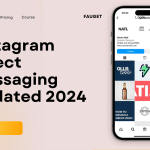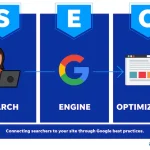
Increase Blog Traffic with on-page seo techniques – A Comprehensive Guide
Introduction
In the vast digital landscape, where millions of blogs are competing for attention, mastering on-page seo techniques is crucial for driving traffic to your blog. On-page SEO involves optimizing various elements on your web pages to make them more search engine-friendly and user-centric. This comprehensive guide will provide you with actionable insights and strategies to boost your blog’s visibility and drive organic traffic through effective on-page SEO techniques.
Table of Contents
- Understanding On-Page SEO
- Keyword Research and Optimization
- Crafting High-Quality and Relevant Content
- Optimizing Meta Titles and Descriptions
- Heading Tags and Formatting
- Image Optimization for SEO
- Internal and External Linking Strategies
- Mobile Responsiveness and Page Speed
- User Experience and Engagement
- Monitoring and Iteration
- Conclusion
Understanding on-page seo techniques
On-page SEO refers to the practice of optimizing various elements within your blog post or webpage to align with search engine algorithms and user expectations. By strategically implementing on-page SEO techniques, you can improve your blog’s search engine ranking and enhance its visibility to your target audience.
Keyword Research and Optimization
Effective keyword research lays the foundation for successful on-page SEO. Identify relevant keywords that resonate with your content and audience. Utilize keyword research tools to understand search volume and competition. Integrate these keywords naturally into your content, headings, and meta descriptions for better discoverability.
Crafting High-Quality and Relevant Content
Compelling content is at the heart of on-page SEO. Create well-researched, informative, and engaging articles that address the needs of your readers. High-quality content attracts backlinks and keeps visitors on your page longer, signaling search engines that your content is valuable.
Optimizing Meta Titles and Descriptions
Meta titles and descriptions are your content’s first impression on search engine users. Craft unique and descriptive meta titles and concise, engaging meta descriptions. Include relevant keywords while accurately representing your content’s essence.
Heading Tags and Formatting
Proper use of heading tags (H1, H2, H3, etc.) enhances both readability and SEO. Organize your content with clear headings and subheadings. Use descriptive H1 tags for titles and incorporate variations of your target keywords in H2 and H3 tags.
Image Optimization for SEO
Images add visual appeal to your blog, but they can also impact your SEO. Optimize images by using descriptive file names and alt tags that include relevant keywords. Compress images to ensure fast loading times and a seamless user experience.
Internal and External Linking Strategies
Strategic linking is essential for on-page SEO. Internally link to relevant pages within your blog to keep visitors engaged longer. Additionally, incorporate authoritative external links to reputable sources, demonstrating your content’s credibility.
Mobile Responsiveness and Page Speed
With mobile devices dominating internet usage, a mobile-responsive design is crucial. Ensure your blog is mobile-friendly and loads quickly. Page speed directly influences user experience and search rankings.
User Experience and Engagement
User experience matters greatly in on-page SEO. A well-organized layout, easy navigation, and engaging multimedia elements can keep visitors on your page longer, reducing bounce rates and signaling quality content to search engines.
Monitoring and Iteration
SEO is an ongoing process. Regularly monitor your blog’s performance using analytics tools. Analyze which keywords are driving traffic and how users are interacting with your content. Make necessary adjustments and optimizations based on this data.
Conclusion
Mastering on-page SEO techniques is the key to unlocking the potential of your blog’s visibility and organic traffic. By implementing the strategies outlined in this comprehensive guide, you’ll be well-equipped to navigate the ever-changing landscape of search engine optimization and watch your blog’s traffic soar.
For more information or do you have any relevant questions feel free to Click Here






